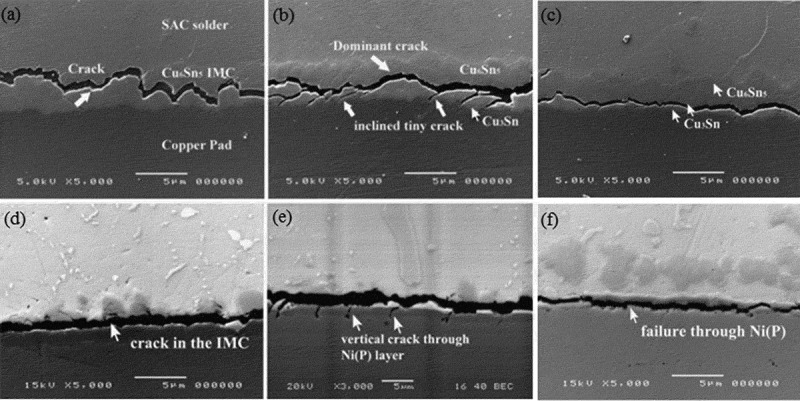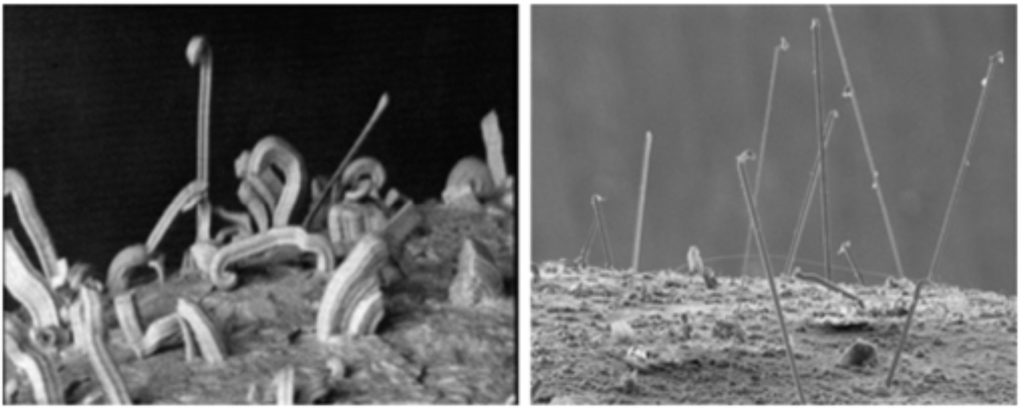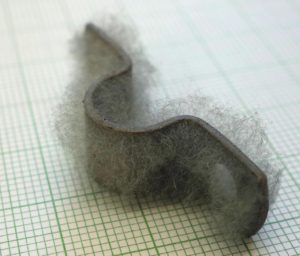After fabricating a PCB either by making one or ordering from a fab house, the next logical step is to solder whatever electrical components onto the board. Depending on the part count per board and the total number of boards, the maker has a few options for final soldering assembly. Soldering is an essential skill for a developer, so it’s a good idea to learn early, practice regularly, and do what you can to understand the detail of the tools and materials in use to ensure that the resulting product will work properly and last the test of time. Here are some tips on how soldering works and the options for materials and methods available to the developer.
What is soldering
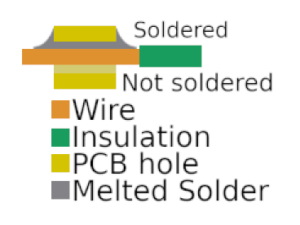 Soldering as a verb refers to the process where two materials are electrically joined together by melting an alloy to mechanically join those conductors. Generally, this differs from welding because soldering does not melt the material from the two joining parts, instead melting a different material to sort of “glue” the units together. Solder as a noun refers to the alloy melted to join two components. Solder comes in many varieties composed of various elements, but generally, there are two camps, leaded and lead-free solder. Leaded solder is an alloy commonly composed of lead, tin, and other metals in smaller quantities, and because of the lead content, this solder has a relatively low melting point and is relatively soft and malleable. Lead-free solder on the other hand contains no lead and instead is made of tin and other metals like silver or copper. Due to the properties of solder made from these blends of metals, lead-free solder often is harder, stiffer, and has a higher melting point among other properties. Leaded solder is an older type of technology and because of the health concerns related to lead exposure, lead-free solder has become common in the electronics industry. That’s not to say that leaded solder is necessarily obsolete. There are other properties of both leaded and lead-free solder that can make a particular type optimal for a product. For example, the hardness of some lead-free solders can be mechanically unstable because as a material’s hardness increases, it becomes more brittle. A particularly hard and brittle solder might be more prone to cracking when experiencing a forceful shock like being dropped on the ground.
Soldering as a verb refers to the process where two materials are electrically joined together by melting an alloy to mechanically join those conductors. Generally, this differs from welding because soldering does not melt the material from the two joining parts, instead melting a different material to sort of “glue” the units together. Solder as a noun refers to the alloy melted to join two components. Solder comes in many varieties composed of various elements, but generally, there are two camps, leaded and lead-free solder. Leaded solder is an alloy commonly composed of lead, tin, and other metals in smaller quantities, and because of the lead content, this solder has a relatively low melting point and is relatively soft and malleable. Lead-free solder on the other hand contains no lead and instead is made of tin and other metals like silver or copper. Due to the properties of solder made from these blends of metals, lead-free solder often is harder, stiffer, and has a higher melting point among other properties. Leaded solder is an older type of technology and because of the health concerns related to lead exposure, lead-free solder has become common in the electronics industry. That’s not to say that leaded solder is necessarily obsolete. There are other properties of both leaded and lead-free solder that can make a particular type optimal for a product. For example, the hardness of some lead-free solders can be mechanically unstable because as a material’s hardness increases, it becomes more brittle. A particularly hard and brittle solder might be more prone to cracking when experiencing a forceful shock like being dropped on the ground.
Here is a microscope view of some solder joints with hard solder alloys after they’ve experienced a drop impact.
These cracks represent a solid electrical connection being severed or being rendered unreliable since the electrons no longer have a completely gapless path through their circuit. Since metals this hard have a crystal structure behavior like glass, tiny cracks over time develop into larger cracks like a growing crack on a car’s windshield. These gaps can cause reliability issues like a device receiving intermittent power instead of being continuously powered, which may not be a big deal for an indicator LED but could cause a microcontroller to reset seemingly randomly. Lead-free solder also has a higher tendency to develop “whiskers”, which is a phenomenon where differences in charge induced by solder contamination, differences in solder grain, and oxides cause very thin “wires” to extrude from the surface of a solder joint.
This may not always cause reliability issues in the end product, but can become worsened if operating in low atmospheric pressures or near high voltages making arcing and short circuits more likely. This has been a problem in some satellites causing very expensive failures. This problem can be mitigated by carefully choosing a solder with a composition that has a lower tendency to develop whiskers as well as using a conformal coating to mechanically restrict whisker growth.
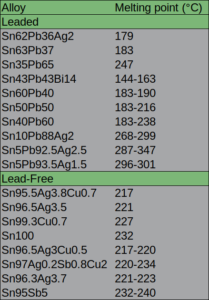 Different solder alloys also have different melting points and should be considered if a product will operate in an extreme condition. Here is a table of some leaded and lead-free solders with their melting points. Generally, it’s advised to stick to leaded or lead-free for every component and substance used in a product because these differences in melting points can cause headaches when assembling. For example, if a chosen solder has a much higher melting point than substances used in a solder pad, the pad can become damaged before the solder even approaches melting.
Different solder alloys also have different melting points and should be considered if a product will operate in an extreme condition. Here is a table of some leaded and lead-free solders with their melting points. Generally, it’s advised to stick to leaded or lead-free for every component and substance used in a product because these differences in melting points can cause headaches when assembling. For example, if a chosen solder has a much higher melting point than substances used in a solder pad, the pad can become damaged before the solder even approaches melting.
To a hammer, everything is a nail
How many parts are there per board, and how many units need to be assembled? Are the components surface mount or through-hole? Are any components electrostatic discharge (ESD) sensitive? These are some of the determining factors for how something might be soldered together. Generally speaking, you can solder using a soldering iron, hot air gun, or a pick-and-place and reflow oven, with the optimal choice depending on those determining factors.
Soldering irons use a heating element to heat up a metal rod with a tip composed of metals optimized for soldering to heat up solder wire to melt onto the contacts of a component. These come in varieties with adjustable and non-adjustable temperatures. Soldering irons work great for through-hole components or surface mount components with all electrical contacts exposed, though surface mount components can be more difficult to work with using an iron because of the much smaller size than through-hole components. Soldering using an iron is the most basic type and can be a great choice when doing repairs to an electrical system, assembling prototypes in low quantity, or having a low component count. Irons have high versatility and should be the first step for someone new to soldering because when an abnormal situation arises, often iron is the best tool. Adjustable irons are usually more expensive than non-adjustable irons, but because different solder alloys have different thermal properties, an adjustable iron can be a great choice to ensure the end product has good quality.
Hot air guns use a fan to blow air over a heating element to melt solder. These also come in cheap non-adjustable as well as adjustable varieties with variable temperatures as well as variable airflow and nozzle attachments to control the shape of the heated air jet. Hot air guns are often used with surface mount components and solder paste. Often solder paste is applied to solder pads, components are placed onto the paste and solder pad, and then hot air is applied to components contacts heating the paste to melting point and adhering the component to the PCB. Hot-air rework is a great option when dealing with surface mount components because an entire area is heated instead of a single point like with an iron, meaning that the very small contacts of some surface mount components can still be adequately heated. If one wished to solder particularly tiny surface mount components using an iron, they might have to swap out the tip of their iron with a sharper or pointier tip to establish a good enough contact with the component solder pads for good heating. Hot-air rework is also great for certain types of IC packages that have contact points that are not accessible to an iron. For example, the IC package Ball-Grid-Array (BGA) has many electrical contacts on the bottom side of a flat chip, making it quite difficult to solder using an iron, but hot air rework can heat up all of a BGA chips contacts simultaneously since the hot air flows over an entire area, meaning it also heats the IC package itself and therefore heats the bottom contacts.
Pick-and-place machines are machines that use a robot arm to place all or most components onto a PCB using unmelted solder paste to adhere the component. The PCB with components is placed in a temperature-controlled reflow oven to melt all solder joints simultaneously. These machines are primarily used with surface mount components and because placing each component is done by a fast and precise robot, this process is well suited for products with high component counts or when assembling a high volume of units. Due to these factors, PCB manufacturers often use pick-and-place and reflow ovens to assemble huge volumes very quickly with less error since the human element is removed.
Flux on, Flux off
A lot of complex metallurgy, chemistry, and thermodynamics goes into the composition of solder because different metals don’t always adhere to each other easily in the way desired in electronics, and a couple of things that worsen how well solder joins to another metal are dirt and oxidation contamination. Iron, when exposed to Oxygen slowly develops rust on its surface, and the same thing happens to most other materials, which is accelerated by heat. After components are made ready for assembling onto a PCB, Oxygen, and moisture in the air can slowly develop a layer of oxidation on the contacts for soldering, reducing how well the solder can stick. Even when pre-cleaning a PCB and components using solvents can be insufficient because, in the brief amount of time between cleaning and soldering, an oxide layer can develop on the metal surface. Something that is very often used to mitigate this problem is flux. Flux is a substance that when heated becomes acidic and removes any oxidization that may be on electrical contact, while also covering the solder joint preventing any exposure to Oxygen while the solder is melted. Flux is so ubiquitous that many solder wires actually have a void in the wire filled with flux, with solder paste often being composed of very fine solder particles suspended in a flux paste. This isn’t the end of the cleaning story however because not all fluxes are identical with some having a higher acidity, which can over time corrode the electrical contacts on a PCB. Because of this, it can be necessary to remove the flux residue after soldering. This can be done a variety of ways from solvent sprays, isopropyl alcohol, or even ultrasonic baths. Excellent component cleanliness can make the difference between a solder job that is smooth and easy or difficult and prone to damaging parts. For this, a nice soldering process can be broken down into these steps: pre-clean > flux on > solder > post-clean > conformal coat if desired.
Outsourcing the headache
Soldering is a skill that can be easy to get into and difficult to truly master because of the variety of electronic products and materials involved and is an indispensable capability. But luckily for those uninterested in learning this skill, many PCB suppliers offer PCB assembly services, ensuring the end product gets made with professional-level quality and speed, allowing the designer to focus on other things.
Thinking about making a product that is out of your soldering skill range? We can produce the PCB and assemble it for you! Get your free PCB quote here, or call us at (888) 648-5071.
-Paul Ronquillo


